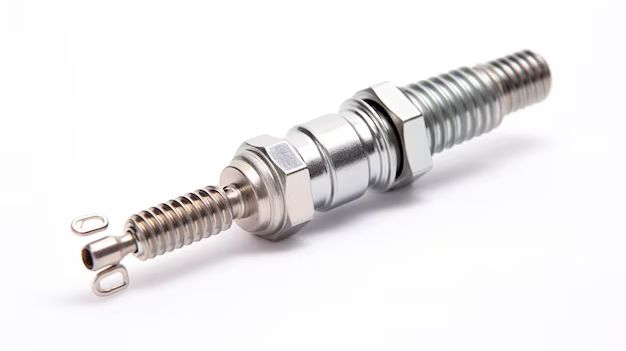Getting a spark plug out without the proper spark plug socket can be tricky. Spark plugs are threaded into the cylinder head and tightened down to very specific torque values. Trying to remove them by hand or with the wrong tool can damage the plug or cylinder head threads. However, with some clever thinking and the right techniques, it is possible to remove stubborn spark plugs without a dedicated spark plug socket.
Page Contents
Why Getting Spark Plugs Out is Difficult
There are a few key reasons why spark plugs can be stubborn and difficult to remove:
- The threads are tightened down very securely – Spark plugs sees temperatures up to 500°F and high pressures inside the combustion chamber. Proper torque ensures the plug makes a good seal and doesn’t work itself loose.
- The space around the spark plug is cramped – Engines are tightly packaged, leaving little clearance around the plugs. This makes it hard to fit tools onto the plug.
- Aluminum cylinder heads can have soft threads – Aluminum heads are common and the threads can deform or strip if you try to force the plug out.
- Carbon deposits and rust can “glue” the plug in – Built up carbon inside the combustion chamber or rust on the threads makes turning the plug difficult.
A spark plug socket is designed specifically to avoid these issues. The rubber insert grips the plug body while the interior shape fits snugly over the hex. The proper fit prevents damaging the threads during removal. When a socket isn’t available, we have to improvise while still avoiding potential damage.
Steps to Remove a Spark Plug Without a Socket
While a dedicated spark plug socket is ideal, there are some techniques you can use in a pinch:
Use a Six-Point Socket (Preferred Method)
A six-point socket, while not perfect, can be used successfully:
- Choose a socket as close to the plug’s hex size as possible. Too loose increases the chance of stripping the threads.
- The socket will not grip the plug’s rubber gasket – use your fingers to prevent the plug from falling into the head.
- Turn the plug counterclockwise to loosen – apply steady pressure but do not force.
- Once broken free, remove the plug by hand by gripping the hex.
This allows you to fit the socket over the plug hex and turn it from above the plug body. Go slow, working back and forth to break corrosion loose.
Use an Oversized Fitting as an “Improvised Socket”
If a six-point socket isn’t making enough contact, you can improvise a “socket” using an oversized fitting:
- Find a fitting, nut or tube that just fits over the spark plug hex.
- Slide the fitting over the hex and turn using a wrench for leverage.
- Again, apply steady pressure without forcing to avoid damage.
PVC couplers, tubing, and some exhaust components like oxygen sensor nuts may fit well enough over a spark plug.
Use Non-Metallic Tools to Grip the Plug Body
When no socket is available, you can try using non-metallic tools and items to grip the plug body:
- Use heavy rubber gloves, cloth, or tape to improve grip on the plug body.
- Locking pliers, channel locks, or oil filter pliers can grip the plug body if coated/wrapped first.
- Use wrenches or ratchets only on the plug hex – never the body.
The goal is protecting the body from being marred while only turning the hex. This avoids putting side loads on the plug threads.
Remove External Components for More Access
On some vehicles, removing parts on top of the plugs can provide better access:
- Removing the intake manifold or valve cover allows reaching the plug from above.
- Removing surrounding ignition coils may allow fitting a socket over the plug.
- Removing airflow tubes, ducting, or wiring brackets creates more room.
This significantly increases the workload but may be necessary with extremely difficult to access plugs.
Tips for Starting Difficult Spark Plugs
If you encounter stubborn plugs that do not want to budge, here are some tips:
- Use penetrating oil and let it soak for at least 10-15 minutes before attempting removal.
- Try a “shock” method like tapping the end of the ratchet or giving the wrench a quick impact with a small hammer.
- Make sure you are turning counterclockwise – it’s easy to get mixed up under the hood.
- If the plug turns but won’t come out, run the engine for 30 seconds to warm and expand the threads, then retry removal.
Slow and steady force with penetration oil is key. Avoid excessive force which can damage threads.
Getting Stuck Spark Plugs Back In
If a plug refuses to go back into the cylinder head easily, here are some tips:
- Make sure the threads are clean and free of debris/rust – chase threads with a tap if necessary.
- Check for damage – shredded threads may require thread inserts or a new head.
- Use anti-seize on the plug threads to aid installation.
- Have someone tap the top of the plug with a wrench/hammer while you thread it in.
- Ensure you are not cross-threaded. Back the plug out and try re-inserting.
Damaged plug hole threads are not uncommon, so be alert for issues getting plugs to seat properly.
Conclusion
While having the right spark plug socket makes the job much easier, it is possible to improvise with common tools when in a pinch. Using sockets and fittings that approximate the shape of a dedicated spark plug socket allow turning the plug from the hex. Gripping the plug body with protected tools can also work. Just be slow and gentle to avoid damaging the plug or cylinder head threads. With some clever thinking, you can remove stubborn plugs without the ideal socket in an emergency.
